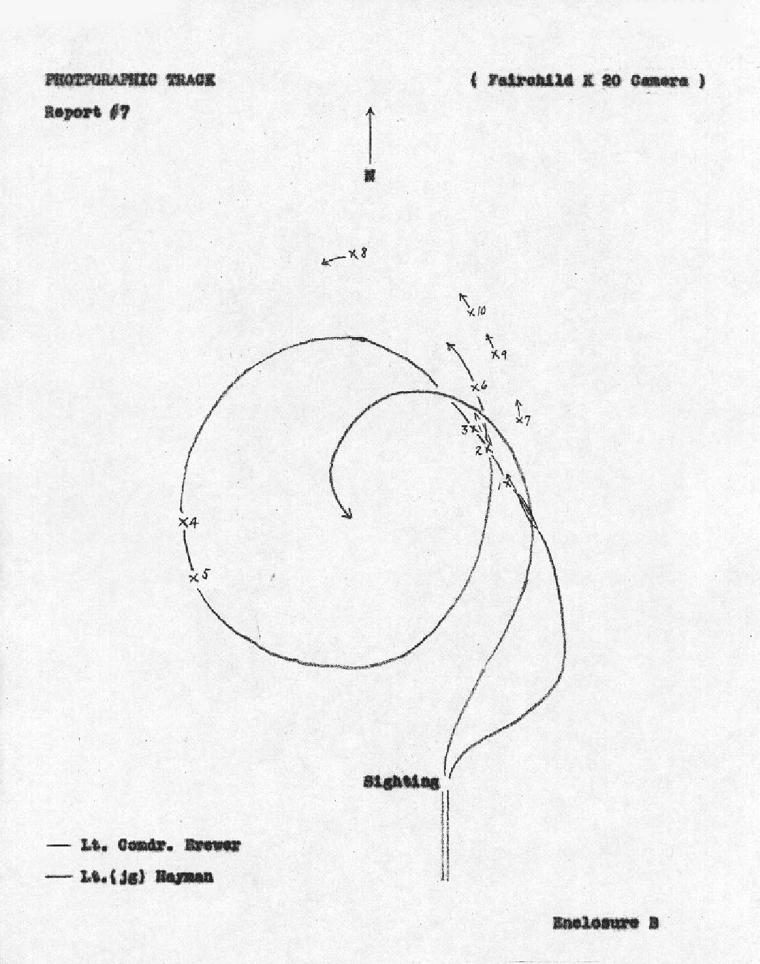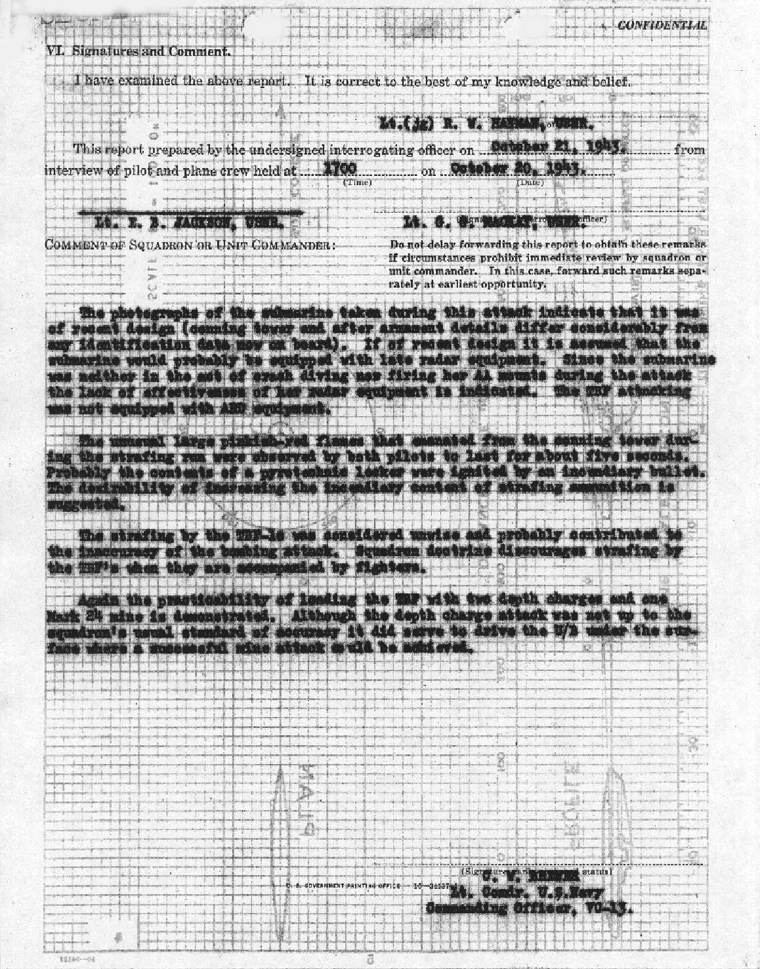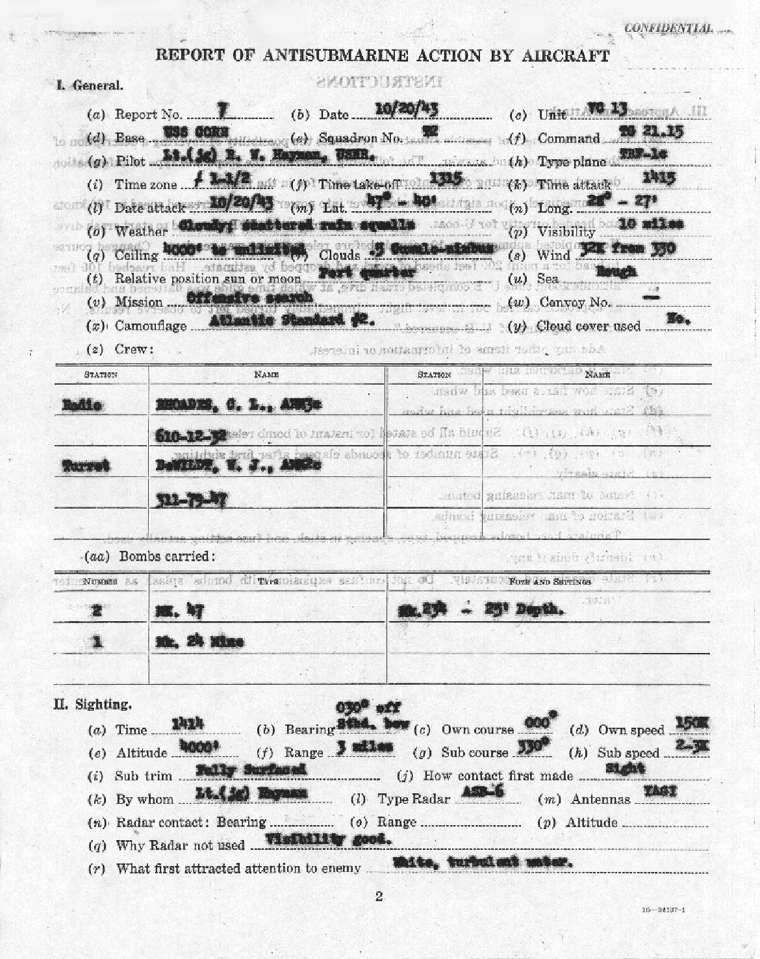

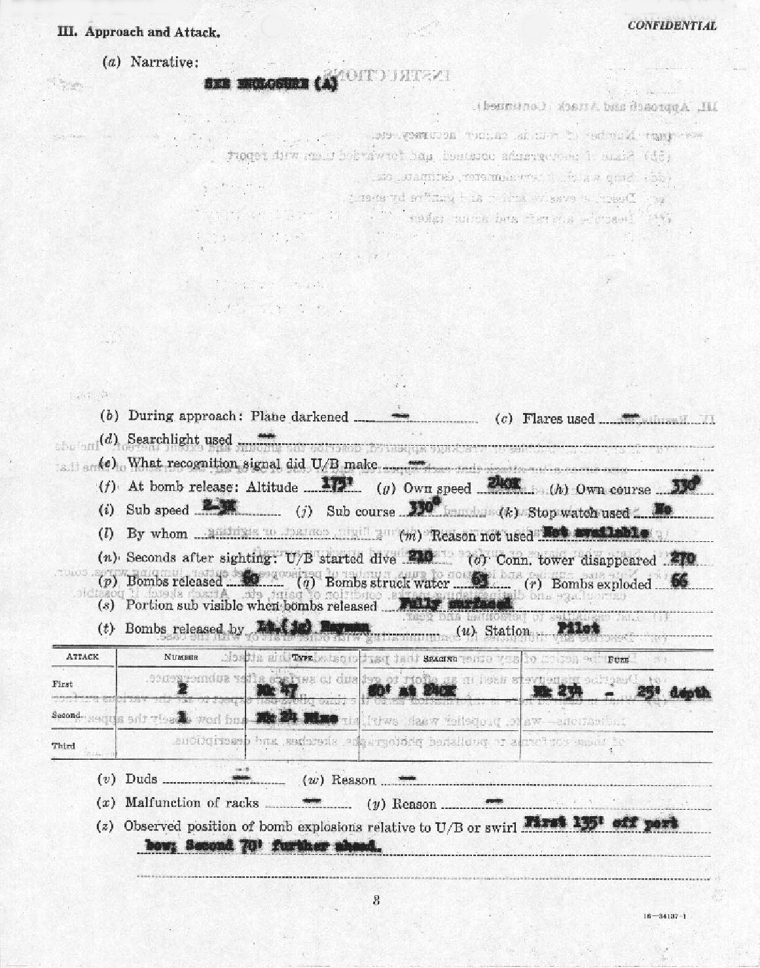
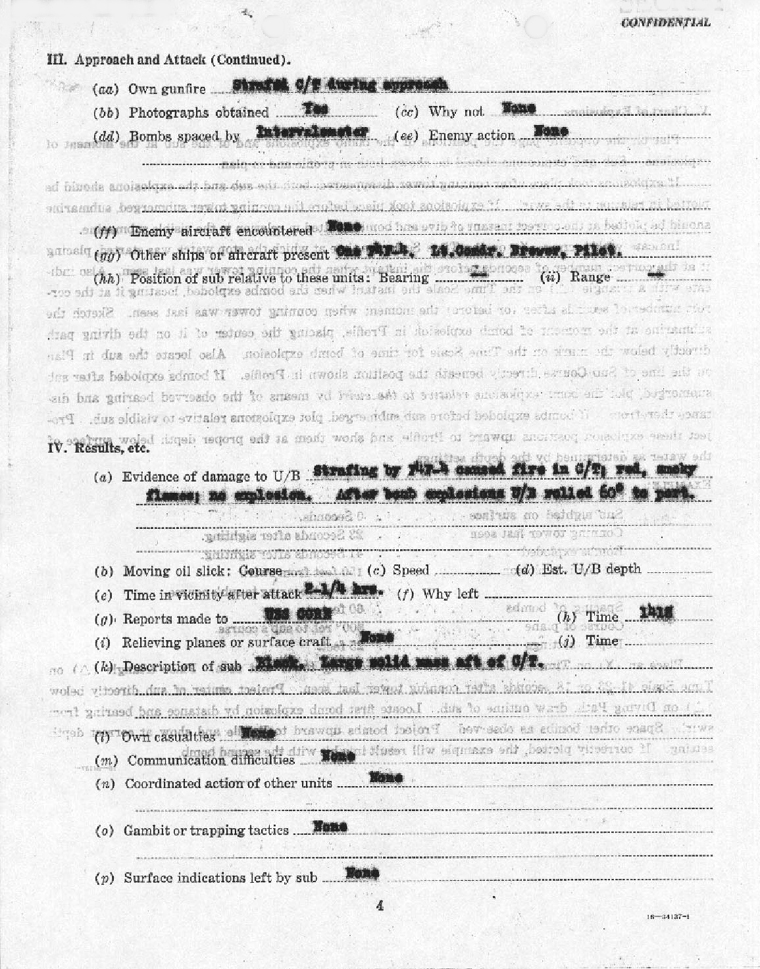
The attacking section of 1 TBF-1C, pilot Lt.(jg) R. W. Hayman, UNSR, and 1 F4F-4, pilot Lt. Comdr. C. W. Brewer, USN, was flying the second leg of an offensive search into an area reported by COMINCH to contain a refueling concentration. Overcast averaged .5, with scattered showers, though the area immediately over the scene of attack was clear. Visibility averaged 10 miles except in rain squalls. The sea was very rough, with a wind of 32K. The section had previously been flying on course 0000 at 6000’ searching visually, but had reduced to 4000’ to go under a cloud. Emerging from under the cloud, the submarine was sighted by the TBF pilot approximately 300 off his starboard bow, distant 3 miles. Submarine was black fully surfaced, on course 3300 headed directly into the wind, and was making very little more than steerage way. |
||
The F4F-4 was flying close aboard and immediately caught the TBF pilot’s hand signal, located the submarine and started a strafing run, attacking the submarine from the port quarter, 300 from astern. Sun on the port quarter made this run almost directly from out of the sun. Fire was opened at 1,000 yards and tracers were seen by accompanying TBF’s crew to ricochet from the deck and conning tower. Approximately 1,000 rounds of ammunition were expended. Fire was concentrated on C/T as the after guns appeared not to be manned. When F4F was at 500’ a violent red flame was seen to break out, which completely filled the conning tower and extended aft to the upper gun platform. No anti-aircraft fire was experienced. Pulling out of the strafing run, F4F-4 turned left and gained a position which afforded unobstructed visibility of the depth charge attack. |
||
The TBF had meanwhile turned right to lose altitude and gain a more favorable position for attack, the angle of direct attack being too steep. Attack was made from almost directly astern in a final glide of approximately 100. The pilot expended 40 – 50 rounds from each gun in strafing during approach. Bombs were released from 175’ altitude, course 3300, speed 240K. Bombs entered the water 100’ and 170’ over and slightly to the left of submarine’s course, probably due to plane being in a left skid at the time. (See photo of LTJG Hayman's attack) The tip of the submarine’s bow was obscured by the water thrown up by the explosion. |
||
The submarine proceeded on into the depth charge disturbance. Some 30 seconds following the depth charge explosion, the submarine suddenly rolled over 600 to port. Very shortly thereafter the bow and conning tower disappeared, leaving the stern above the surface at an angle of 300. Twenty to forty feet of stern was visible for 20 to 30 seconds, the length visible being varied by the waves. The stern then slowly disappeared. During this time the TBF had made a turn to the left to gain position for an attack with a MK 24 mine, taking pictures meanwhile. |
||
Thirty seconds after the stern disappeared the TBF made another run upwind along the course of the submarine, dropping a MK 24 mine at the center of the disturbance left by the disappearing stern. The mine entered the water, ran straight ahead true and then made a sharp turn to the right. Approximately two minutes thereafter, the pilot and radioman observed a shock wave and a white flash (“as if some one had turned on a flash light under water”) 300 – 400’ forward and to starboard of the point of the mine’s entrance. This shock wave developed into |
||
- 1 - ENCLOSURE (A). |
||
a symmetrically round area of green water and air bubbles (as opposed to the disturbance left by breaking rollers). This symmetrical area faded out within a minute or two in the heavy seas, but the disturbance is clearly discernable in the photographs. |
||
No further evidence was observed by the planes, which remained on station for 2 hours and fifteen minutes and kept the position marked with dye markers and smoke floats. Sea was so rough that dye markers which usually persist for a matter of hours were very nearly obscured in fifteen minutes. |
||
The USS CORE maintains a 24-hour guard on the two (2) high frequencies of the area, and in addition, two (2) high frequencies of adjacent are as defined in CSP 1774(A). Further, from one (1) hour prior to darkness until daylight the USS CORE guarded frequencies 385, 396, 437, and 490 kilocycles, and searched continuously as follows: USS GREENE 200-350 kilocycles; USS BELKNAP 350-500 kilocycles; USS GOLDSBOROUGH 500-650 kilocycles. No transmissions which might possibly have emanated from the attacked submarine were intercepted. |
||
- 2 - ENCLOSURE (A). |
||
